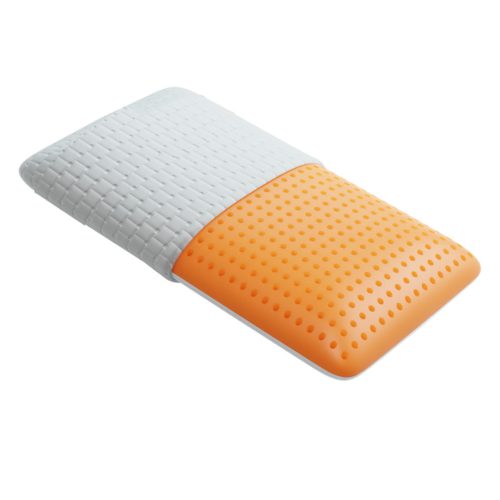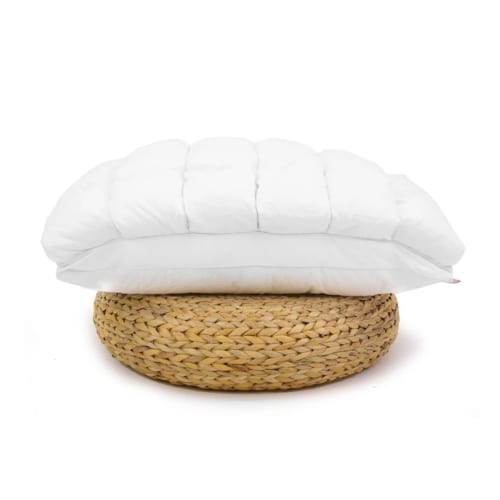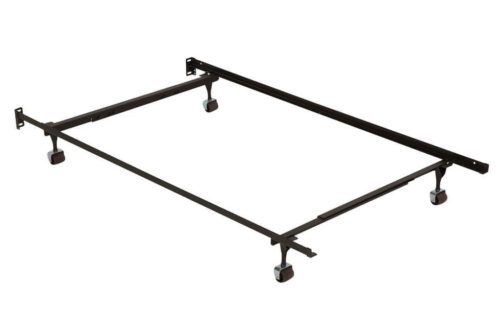
Choosing between gel memory foam and memory foam for pillows involves understanding their unique benefits tailored for pain relief and comfort during sleep. Here at Mattress Mart, we have high-quality options that demonstrate the importance of using the finest raw materials to ensure restful sleep, emphasizing the need to select meticulously for individual preferences.
To discover which pillow type aligns best with your sleeping habits and offers the optimal support and comfort, embarking on a comparative analysis of gel memory foam vs memory foam is essential. Both types promise enhanced sleep quality and pain relief, but their distinct characteristics cater to different needs. Explore further to make an informed decision.
What is Gel Foam Pillow
Gel Foam Pillow Features:
- Cooling Technology: Incorporates gel particles or beads into memory foam for a slow-conforming effect, allowing the pillow to mold precisely to the user’s head, neck, and shoulders. The gel infusion provides an extra-cool feel, helping to disperse heat and keep the user cool throughout the night.
- Support and Comfort: Offers full-body support and minimal motion transfer, similar to regular memory foam pillows. The gel-infused option tends to stay cooler, making it appealing for hot sleepers. It doesn’t retain as much heat, making it more comfortable for those who tend to overheat.
- Health and Safety: Features like the Nature’s Sleep Gel Memory Foam Pillow use a custom memory foam called ViTex, offering great support and pressure relief with the responsiveness of latex foam. The foam core is certified CertiPUR-US, ensuring it was made without harmful chemicals and has low VOCs. The pillow comes with two covers: an inner 100% cotton cover for protection and an outer 75/25 cotton-poly blend cover that is soft, breathable, and allergen resistant. The outer cover can be removed, and machine washed, making it easy to maintain hygiene.
What is Memory Foam Pillow
Memory foam pillows, crafted from viscoelastic polyurethane material, are designed to provide unparalleled support and comfort. They uniquely mold to the sleeper’s shape, thanks to their material composition that reacts to body heat and pressure. Here’s a closer look at their characteristics:
- Types of Memory Foam:
- Traditional memory foam, known for its dense, closed-cell structure, tends to retain heat.
- Open-cell memory foam features air pockets for increased breathability, making it cooler and less dense.
- Gel-infused memory foam incorporates gel beads or liquid for enhanced cooling qualities.
- Benefits for Sleepers:
- Ideal for side and back sleepers, offering tailored neck and head contouring for support and pressure relief.
- The curvature design supports side and back sleepers’ natural spine alignment, while stomach sleepers may find less support.
- Durable, maintaining shape over time, and known for high-quality performance lasting 8 to 10 years.
- Care and Maintenance:
- Avoid machine washing; instead, clean the foam by running it under slow, cool water without detergents.
- Comes in various shapes and sizes to accommodate different sleeping positions, enhancing the sleeping experience.
Memory foam pillows stand out for their ability to adapt to individual shapes, offering exceptional support and enhancing sleep quality.
Comparative Analysis: Support and Comfort
- Cost and Comfort:
Gel memory foam pillows are generally costlier than memory foam pillows, attributed to the additional layer of gel foam, which enhances comfort features. This might influence the buyer’s decision based on budget and the value placed on cooling properties for a comfortable sleep.
- Support and Pain Relief:
- Both memory foam and gel memory foam pillows provide excellent support to the head and neck, crucial for pain relief and maintaining body posture during sleep. Memory foam pillows, particularly, are praised for their ability to reduce snoring by supporting the neck and opening the throat, offering a significant advantage for those with sleep apnea or heavy snoring issues.
- Preference and Sleep Quality:
- While gel memory foam pillows are favored by hot sleepers due to their cooling properties, some individuals may not find them as comfortable and prefer the traditional memory foam pillows. This highlights the subjective nature of comfort and the importance of considering personal sleep habits and preferences when choosing between gel memory foam vs memory foam pillows.
Comparative Analysis: Durability and Maintenance
- Durability Factors:
- Gel foam pillows incorporate gel beads that enhance their durability, making them less likely to lose shape or supportive properties over time compared to regular memory foam pillows.
- Memory foam pillows are celebrated for their resilience and ability to maintain shape, ensuring a long-lasting comfort experience.
- Maintenance and Care:
- For both gel memory foam and memory foam pillows, adhering to the manufacturer’s care instructions is paramount for longevity. This includes using a high-quality, durable, and easily cleanable outer cover.
- While memory foam pillows are smooth and consistent, preventing lump formation, they should not be machine washed. Instead, cleaning under slow, cool water without detergents is recommended to preserve their quality.
- Considerations for Long-Term Use:
- Both pillow types boast durability and ease of cleaning, but individual preferences and needs might influence the choice between them. The addition of gel in gel foam pillows offers a slight edge in durability and maintenance ease, appealing to those looking for lasting comfort and minimal upkeep.
Conclusion
Through an insightful exploration of gel memory foam versus memory foam pillows, our discussion has highlighted the distinctive benefits and features that cater to diverse sleeping preferences and needs. By examining the cooling technology of gel-infused pillows against the traditional, supportive embrace of memory foam, this article serves as a comprehensive guide to making an informed choice tailored to individual comfort and physiological requirements. Emphasizing the importance of selecting the right pillow for pain relief and enhanced sleep quality underlines our commitment to fostering better sleep health.
As we conclude, it becomes clear that whether the choice leans towards the innovative coolness of gel memory foam or the classic, contouring support of memory foam, the decision is deeply personal and impacts overall well-being. We encourage readers to reflect on their specific preferences, sleep habits, and comfort requirements when choosing between these two types of pillows. Discover the optimal pillow that aligns with your sleep needs and embark on a journey towards restful, rejuvenating sleep.
FAQs
Gel memory foam pillows are essentially memory foam pillows enhanced with an additional layer of gel pods. This layer is designed to augment comfort for users, offering a unique blend of support and plushness that distinguishes them from their traditional memory foam counterparts.
The inclusion of gel in memory foam pillows serves a dual purpose. Firstly, because gel has part-liquid properties and liquids are effective cooling agents, these pillows are adept at dispersing body heat, thereby maintaining a cooler surface for extended periods. Secondly, the gel improves airflow within the pillow, further contributing to its cooling effect and enhancing sleep quality by regulating temperature.
When considering the reduction of motion transfer, especially if you share your bed with a partner who moves frequently during the night, both memory foam and latex pillows emerge as superior choices. These materials excel in isolating movement, ensuring that disturbances are minimized, and you can enjoy uninterrupted sleep.
Memory foam, including gel-infused variants, is generally regarded as safe for most individuals. However, it may not be suitable for everyone. People with allergies, asthma, or other respiratory issues might find memory foam problematic due to its potential to trigger reactions. Additionally, those with a high sensitivity to odors might also find the characteristic smell of memory foam to be bothersome.







